
The 1960s – what a decade! It was a time when the world held its breath, caught between the fierce geopolitical rivalry of the Cold War and the boundless possibilities of the unknown. As two global superpowers, the United States and the Soviet Union, competed for dominance, their ambitions transcended terrestrial boundaries, turning skyward to ignite a contest that would forever change human history: the Space Race. This wasn’t just about reaching the stars; it was a profound battle of ideologies, a magnificent showcase of technological might, and a testament to the human spirit’s insatiable drive to conquer the impossible and push the very limits of discovery.
Behind every incredible launch, every orbital first, and every record-shattering flight was an army of brilliant minds – engineers, mathematicians, and visionaries. These unsung heroes pushed the boundaries of science, technology, and problem-solving, tackling challenges that once seemed utterly insurmountable. They transformed dreams into reality, laying the groundwork for advancements that continue to influence space exploration, aerospace engineering, and STEM education even today. Their collective ingenuity defined an era, sparking an age of innovation and inspiring countless young minds to look up, wonder, and dare to dream big themselves.
So, get ready to embark on an exhilarating journey through some of the most spectacular triumphs of engineering and aeronautics from that electrifying decade. We’re talking about the real deal – the moments and machines that exemplify human ingenuity and determination. From the initial shockwaves of satellite launches that startled the globe to the intricate dance of human-crewed spacecraft in orbit, and even to supersonic flights that defied imagination within Earth’s atmosphere, these feats didn’t just break barriers; they shattered them, proving what we can achieve when ambition meets unparalleled technical prowess and a relentless pursuit of progress. This is the story of how the ’60s propelled humanity into a future we could only once imagine.

1. **Sputnik 1: The Dawn of the Space Age**
The world was caught off guard on October 4, 1957, when the Soviet Union launched Sputnik 1, the first artificial satellite to orbit Earth. This bold achievement didn’t just stun the world; it gave the U.S.S.R. an early and undeniable lead in what would become the fiercest technological competition of the century. It was a clear demonstration of capability, setting the stage for decades of rivalry and unparalleled innovation, fundamentally altering the global perception of technological superiority.
Sputnik 1 was more than just a satellite; it was a powerful symbol and a wake-up call. Its launch, enabled by the formidable R-7 rocket developed under the charge of Soviet engineer Sergei Korolev, ignited what became famously known as the “Sputnik crisis” in the West. This moment profoundly impacted American public awareness of space activities, leading to a scramble to catch up and a rapid acceleration of the US space program. The perception that the United States trailed the Soviets galvanized national efforts, channeling immense resources into scientific and technological advancement.
At the heart of this triumph was the R-7 Semyorka, the intercontinental ballistic missile (ICBM) that propelled Sputnik into orbit. This rocket was itself a marvel of Soviet engineering, designed in a two-stage configuration with four jettisoning boosters. It represented a direct evolution of post-World War II rocket technology, building upon the foundations laid by captured German V-2 assets. Its ability to hurl a significant payload into Earth orbit was a direct consequence of the ballistic missile race that underpinned the burgeoning Space Race.
The Soviet space program’s use of secrecy, as noted in the context, meant that details about who built and launched the satellite were initially withheld, contributing to the mystique and impact. However, the undeniable fact of Sputnik’s successful orbit broadcast a clear message: humanity’s reach had just dramatically expanded. This single event highlighted the critical dual-use nature of advanced rocket technology, marrying military prowess with the civilian pursuit of scientific exploration, and firmly establishing the USSR as a frontrunner in space.
Sputnik 1’s success proved the transformative potential of engineering that had been quietly developing behind the “space curtain” of Soviet efforts. It spurred intense competition and innovation on both sides, directly leading to exponential growth in NASA funding and a re-evaluation of educational priorities in the United States. Its beep-beep from orbit wasn’t just a sound; it was the unmistakable signal that a new era of human exploration had truly begun.
Read more about: Vivian Ayers Allen: An In-Depth Chronicle of a Pulitzer-Nominated Poet, Cultural Activist, and Matriarch Who Shaped Generations
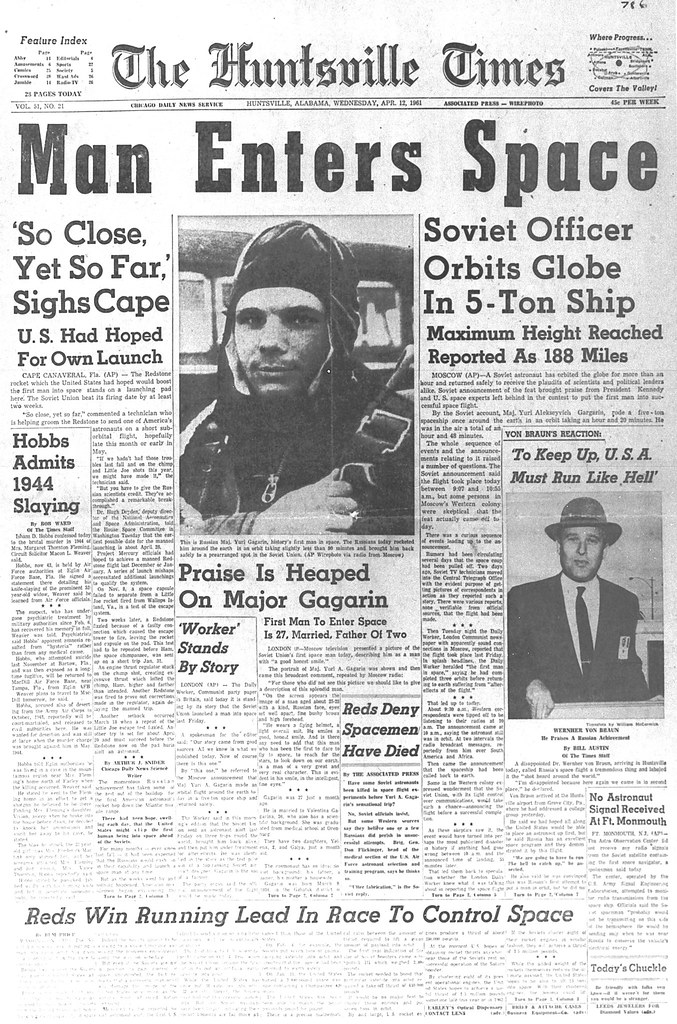
2. **Yuri Gagarin: Humanity’s First Giant Leap**
Just a few years after Sputnik’s electrifying debut, the Soviet Union once again captured global attention with another breathtaking first: sending the first human into space. On April 12, 1961, Yuri Gagarin embarked on his historic orbital flight aboard Vostok 1. This monumental feat cemented the USSR’s early dominance in human spaceflight and sent ripples of inspiration and challenge across the globe, proving that what was once considered science fiction was now within human grasp.
Gagarin’s journey was more than just a scientific experiment; it was a profound psychological triumph for the Soviet Union and a moment of collective wonder for humanity. The idea of a human leaving Earth’s atmosphere, orbiting our planet, and returning safely was previously the stuff of speculative fiction. His successful mission provided undeniable proof of humanity’s capability to venture beyond our terrestrial confines, stirring imaginations and igniting dreams of future explorers in every corner of the world.
The Vostok 1 spacecraft, a direct derivative of the mighty R-7 Semyorka ICBM, showcased the robustness and reliability of Soviet rocket development. This engineering triumph underscored the meticulous planning and daring execution required for such a pioneering mission. It demonstrated that the technologies honed for military applications could be adapted and perfected for the ultimate peaceful (though politically charged) pursuit of human exploration, making the impossible a tangible reality.
This singular event deeply influenced global politics and directly led to President John F. Kennedy’s decision to dramatically raise the stakes. Just weeks after Gagarin’s flight, Kennedy delivered his famous address, challenging the US Congress to commit to the audacious goal of “landing a man on the Moon and returning him safely to the Earth” before the decade’s end. Gagarin’s pioneering journey was undeniably the catalyst for this monumental American ambition, setting the definitive trajectory for the moon race.
The successful completion of this mission, without public reporting of any failures or difficulties by Soviet media, created the impression of flawless operation, further solidifying the USSR’s perceived lead. Gagarin’s heroic image became a powerful symbol, inspiring generations and marking a definitive moment when humanity truly took its first, audacious step off its home planet, opening up an entirely new frontier.
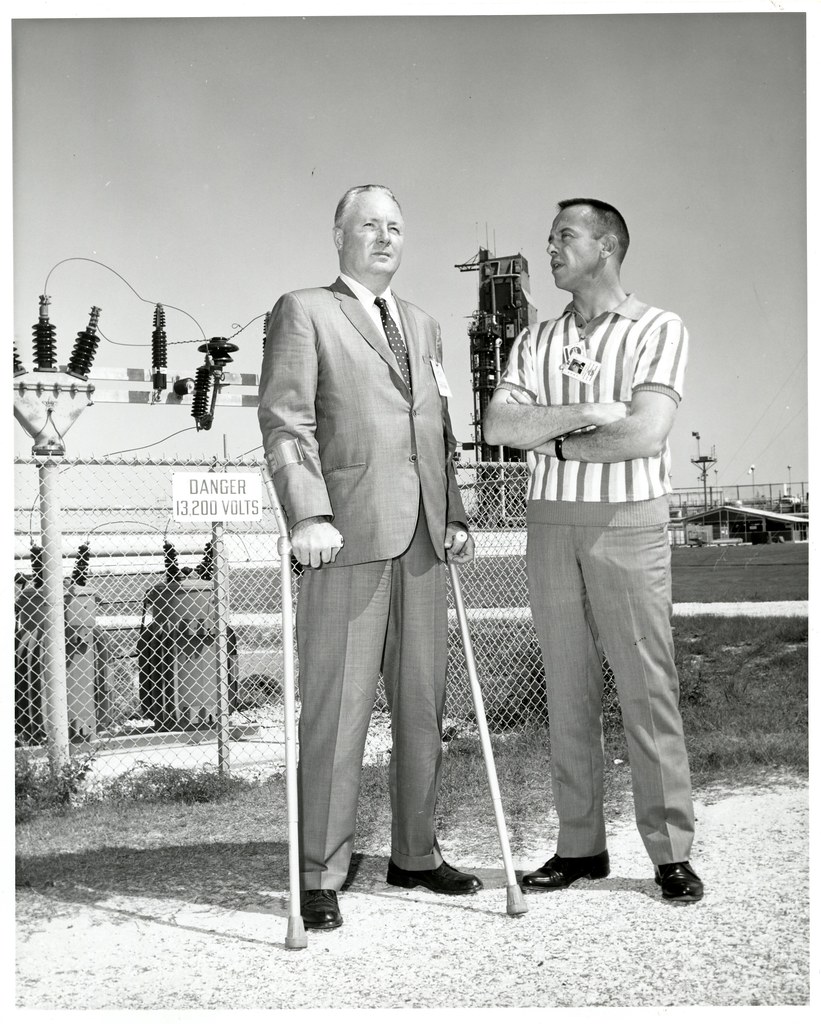
3. **Alan Shepard: America’s First Astronaut**
While the Soviets celebrated their early lead with Sputnik and Gagarin, the United States was rapidly working to respond with its own ambitious human spaceflight program, Project Mercury. A critical and morale-boosting milestone in this effort came on May 5, 1961, when Alan Shepard, aboard the Freedom 7 Mercury spacecraft, became the first American in space. This suborbital flight, occurring just three weeks after Gagarin’s orbital triumph, was a vital, declarative step for the nation.
Shepard’s mission, though a brief 15-minute suborbital hop, was a monumental success from both technical and psychological standpoints. It proved that American rocketry and spacecraft design were capable of sending a human into space and bringing them back safely, directly addressing fears raised by the Soviet “firsts.” The Redstone rocket, developed by Wernher von Braun and his team at the Army’s Redstone Arsenal in Huntsville, Alabama, propelled Shepard skyward, marking a significant achievement in American rocket development and the foundational work of its expatriated German engineers.
The public relations surrounding this achievement were immense and masterfully handled. “America had a new set of heroes—the Mercury 7 astronauts,” and their exploits became household names. Shepard’s flight, and the Mercury program as a whole, was “presented to the American public as a series of unbridled successes by NASA and the press and television.” This carefully cultivated image was crucial in garnering widespread public enthusiasm and the necessary political support for the burgeoning space program.
This mission wasn’t merely about technical accomplishment; it was about national morale and demonstrating resolve in the face of perceived Soviet superiority. The public affairs office for NASA and its contractors “recognized the value of being considered the underdog in the race for the stars.” Shepard’s flight served as a powerful message that America was a serious contender in the Space Race, ready to push its own boundaries and challenge the notion of Soviet infallibility.
By achieving this “first,” even if a short one, the United States signaled its unwavering commitment to human spaceflight. It was the first of six successful launches of solo astronauts aboard Redstone and Atlas rockets during Project Mercury, laying the essential groundwork and accumulating invaluable experience that would prove indispensable for the more complex missions that were soon to follow in the frantic race towards the moon.
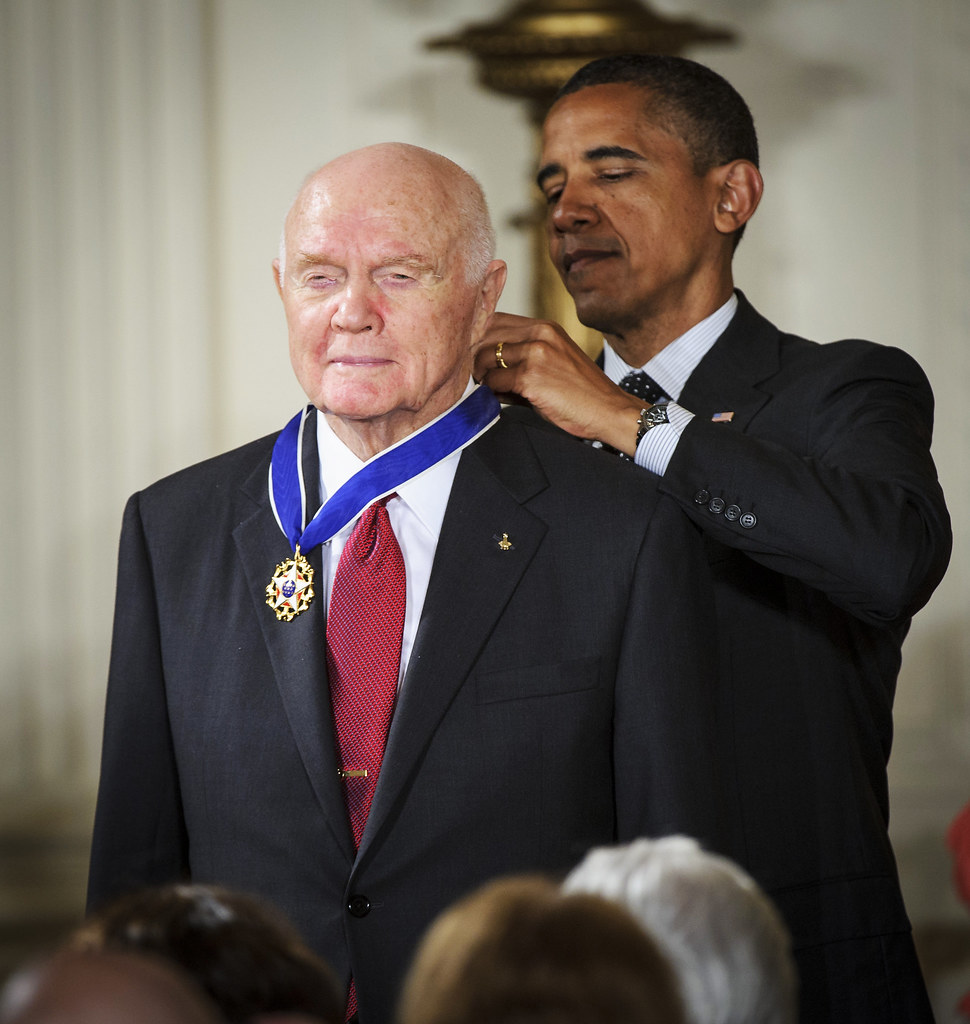
4. **John Glenn: Orbiting the Earth, Redefining the Horizon**
Following Alan Shepard’s pioneering suborbital flight, the next logical and absolutely critical step for the American space program was to achieve orbital human spaceflight. This tremendous accomplishment came on February 20, 1962, when John Glenn lifted off from Launch Complex 14 aboard an Atlas rocket, becoming the first American to orbit Earth. This mission, aboard Friendship 7, was a truly significant leap forward in demonstrating the United States’ growing and increasingly sophisticated capabilities in space.
Glenn’s three orbits of the Earth were a tour de force of American engineering and human courage, offering undeniable proof of American prowess. The Atlas-D missile, originally developed as an intercontinental ballistic missile, proved its remarkable versatility and power as an orbital launch vehicle for Project Mercury. Its innovative design, which notably included “a thin stainless steel fuel tank which relied on the internal pressure of the tank for structural integrity,” allowed for an overall lighter weight structure, a true testament to inventive material science and structural engineering.
The mission was watched with bated breath by a nation eager for more triumphs, with television playing a crucial role in broadcasting the drama and excitement. Glenn became an instant national hero, further solidifying the celebrity status of the Mercury astronauts and profoundly influencing public interest in space travel. His flight not only showcased the technical proficiency of NASA and its contractors but also reinforced the public’s fascination and emotional investment in the Space Race, fueling the drive towards even greater challenges and aspirations.
This pivotal mission validated the United States’ approach to human spaceflight and conclusively proved that American technology could sustain an astronaut in orbit for extended periods. It was a crucial step on the path toward Kennedy’s moon goal, demonstrating the reliability of complex systems and the ability of astronauts to operate effectively in the demanding environment of space, paving the way for the more ambitious and complex Gemini missions to come.
The achievement of John Glenn, combined with the earlier success of Alan Shepard, established America as a formidable competitor in the Space Race. It helped bridge the perception gap with the Soviets, showing that the U.S. was indeed “scrambling to catch up” but doing so with incredible speed and ingenuity, building public confidence in the nation’s scientific and engineering might.
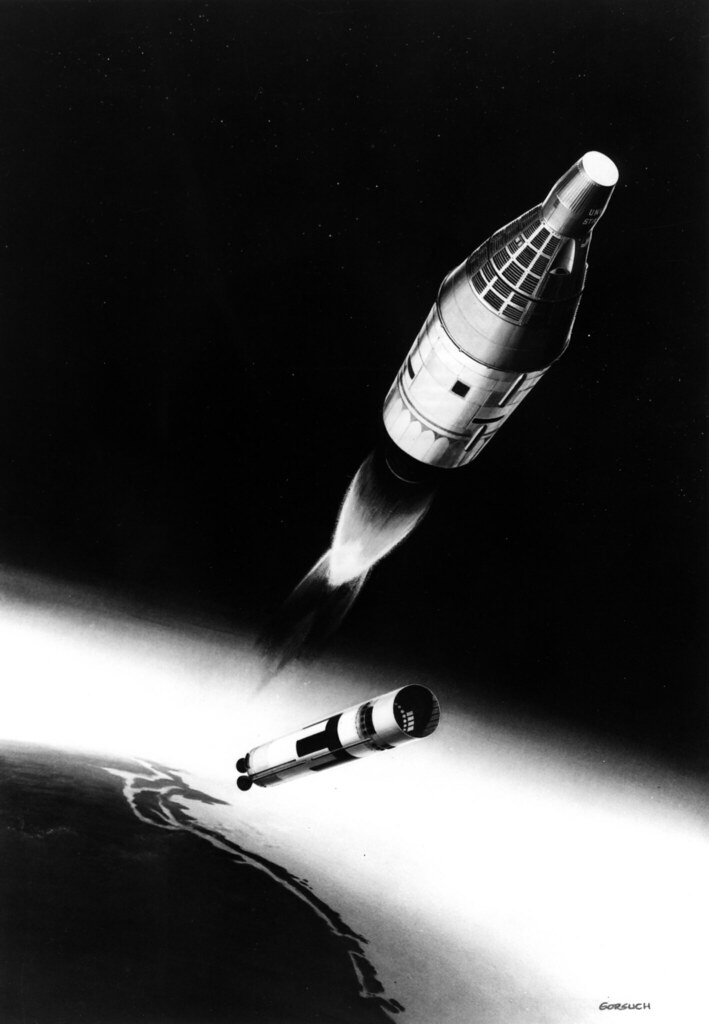
5. **Project Gemini: Mastering the Dance in Space**
As Project Mercury concluded its successful six launches, the United States didn’t rest on its laurels; it immediately pressed forward with Project Gemini. These 10 missions, featuring crews of two aboard Atlas and Titan launch vehicles, were not just follow-ups; they were revolutionary, serving as an indispensable bridge from the solo Mercury flights to the ambitious Apollo lunar landings. Kicking off with Gemini 3 on March 23, 1965, the Gemini program introduced groundbreaking capabilities that were absolutely vital for the ultimate lunar ambitions.
Gemini’s primary objectives were meticulously designed to solve the complex challenges of living and working in space for extended periods, as well as mastering critical orbital maneuvers. The program established an astounding set of firsts, most notably “pioneering spacewalks and spacecraft dockings.” These weren’t mere demonstrations of curiosity; they were absolutely crucial steps in developing the techniques and technologies necessary for later Apollo missions to the Moon, perfecting the “space ballet” required for lunar rendezvous.
Imagine the sheer engineering and piloting precision required for two spacecraft to rendezvous and then dock thousands of miles above Earth! These were skills that had to be learned, refined, and perfected, often with astronauts “quickly learning to live and work, and even troubleshoot, in space” under unprecedented conditions. The powerful Titan rocket, a key launch vehicle for these dual-crewed missions, showcased its formidable capabilities, pushing larger payloads and more complex missions into orbit with remarkable reliability.
The Gemini missions demonstrated an extraordinary level of human ingenuity and adaptability. Astronauts conducted detailed experiments, perfected navigation, and endured longer durations in space, gathering invaluable physiological and psychological data. This intensive training ground allowed NASA to truly understand the intricacies of sustained human presence beyond Earth, preparing both the crews and the ground control teams for the unimaginable challenges of the Moon.
The successful completion of the Gemini missions by 1966 meant that NASA had successfully demonstrated the essential building blocks for lunar travel: controlled orbital rendezvous, complex spacecraft docking, and extended extravehicular activity (EVA). These accomplishments, while perhaps less flashy than landing on the Moon, were the indispensable, hands-on lessons that transformed theoretical possibilities into practical, achievable steps towards humanity’s grandest extraterrestrial destination.
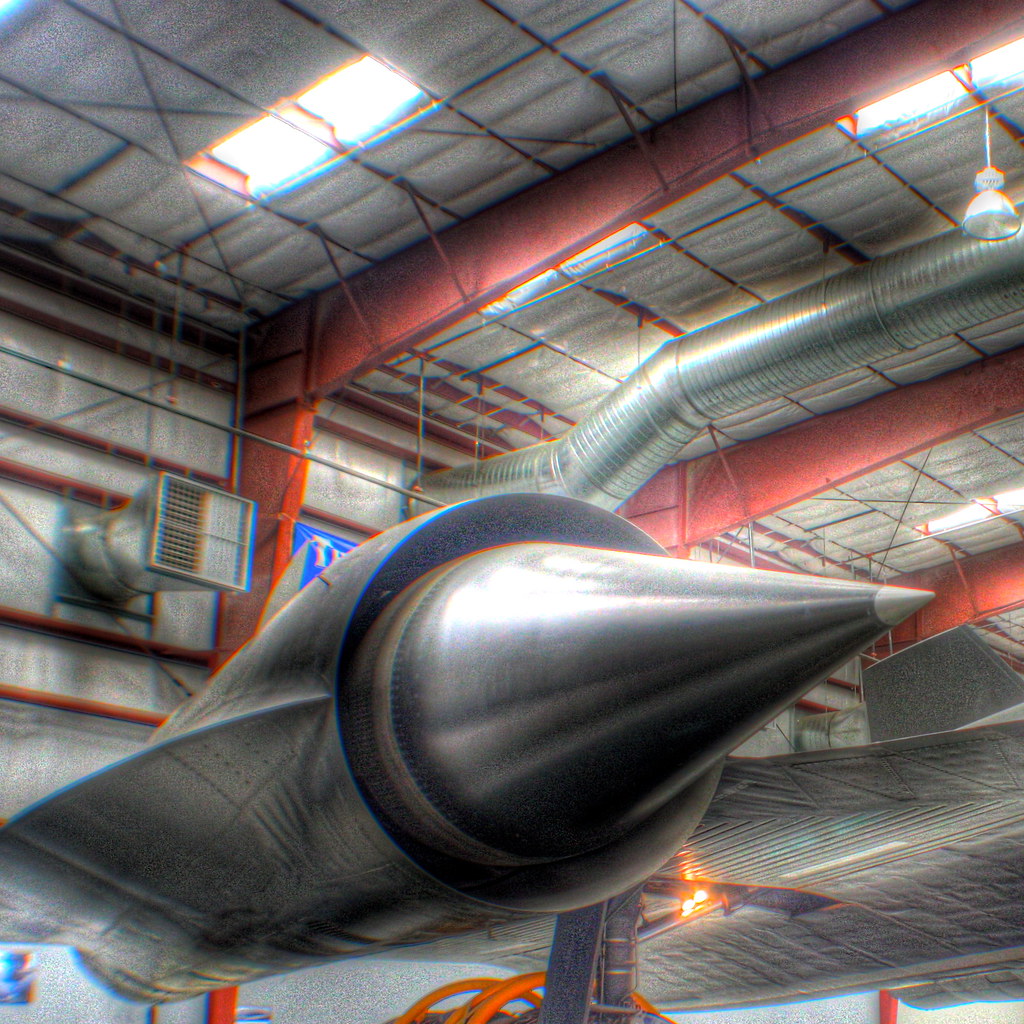
6. **Lockheed SR-71 Blackbird: The Ultimate High-Flying Maverick**
While the Space Race captivated the world with its celestial ambitions, another incredible feat of engineering was quietly taking shape, pushing the boundaries of aeronautical achievement right here in Earth’s atmosphere. Enter the Lockheed SR-71 Blackbird, a long-range, advanced, strategic reconnaissance aircraft developed in the midst of the Cold War. This marvel wasn’t designed for space, but its capabilities were so extraordinary, it redefined what was possible for an aircraft. It was a testament to American ingenuity in a different, yet equally vital, domain.
The SR-71 Blackbird was a true maverick, engineered to perform like no other aircraft before it. Capable of flying at over “3,500 km/h and achieving altitudes greater than 24,000 meters,” it set numerous speed and altitude records, many of which astonishingly “still stand today.” Its unique aerodynamic profile wasn’t just for striking visuals; it was an engineering triumph meticulously designed to facilitate its extraordinary speed and high-altitude performance, rendering it “virtually invulnerable to enemy surface-to-air missiles.”
The innovations integrated into the Blackbird were nothing short of revolutionary, demonstrating a forward-thinking approach to aerospace design. Its designers pushed the envelope in every conceivable way, from its distinctive shape – a consequence of carefully managed thermal expansion during high-speed flight – to its advanced materials. The pioneering use of “lightweight composite materials” and groundbreaking “stealth technologies” were not just cutting-edge for the 1960s; they informed the development of subsequent aircraft for decades to come, influencing both military and commercial aviation.
Beyond its raw performance, the SR-71 gathered vital intelligence with its sophisticated reconnaissance systems, serving as a powerful symbol of the technological might of the USA during this exhilarating period. It revolutionized how reconnaissance missions were conducted, providing unprecedented insights from the edge of space, a crucial advantage in the geopolitical landscape of the Cold War. Its mere existence illustrated the transformative potential of aerospace technology, setting new benchmarks for surveillance aircraft.
The legacy of the Lockheed SR-71 extends far beyond its operational years, embodying human ingenuity and the relentless pursuit of progress. It not only fulfilled its original purpose with unparalleled distinction but also “shaped the future trajectories of both military and civilian aeronautics.” The Blackbird demonstrated that even within Earth’s skies, the drive for technological supremacy could yield machines of truly breathtaking capability, pushing the boundaries of flight itself and inspiring future generations of aerospace engineers.
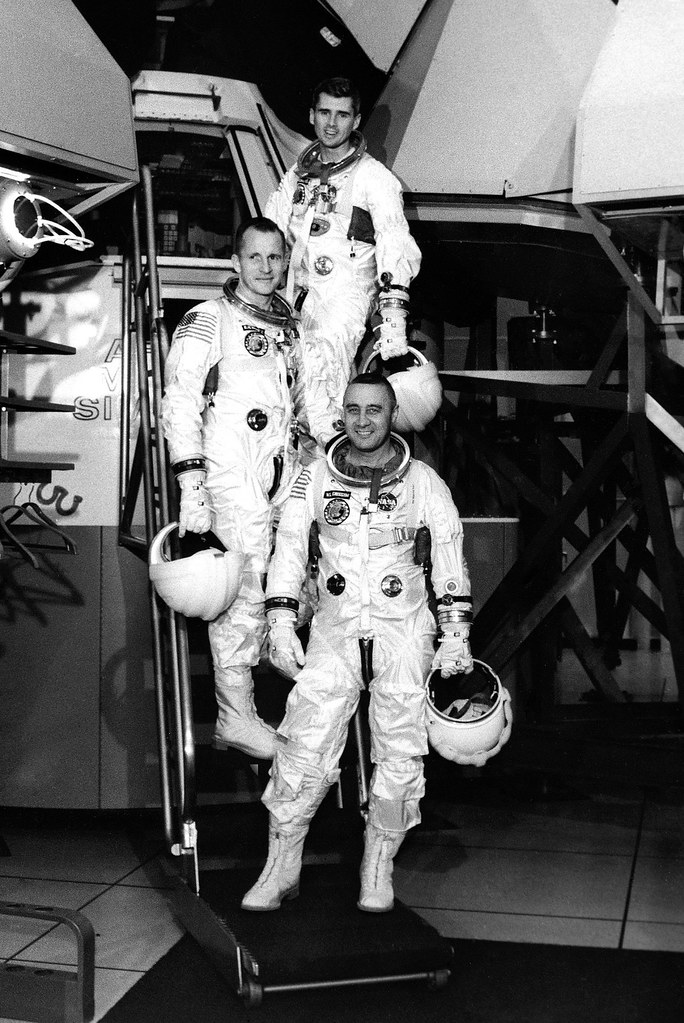
7. **Apollo 1: The Fire That Forged a Safer Future**
While the Space Race was undeniably a story of triumphs, it was also a testament to learning from profound setbacks. The Apollo program, aimed at fulfilling President Kennedy’s audacious lunar challenge, suffered a heartbreaking tragedy on January 27, 1967. Three brave astronauts—Virgil “Gus” Grissom, Edward White II, and Roger Chaffee—lost their lives in a flash fire that swept through their command module during a launch pad test at Complex 34. This devastating event served as a stark, painful reminder of the immense risks inherent in pushing the boundaries of human exploration and the unforgiving nature of pioneering technology.
The fire, occurring just as the crew and spacecraft were coming together for the first flight, disrupted the program at a critical juncture, raising serious questions about safety protocols and spacecraft design. The exhaustive investigation that followed wasn’t just about understanding the immediate cause; it was a comprehensive re-engineering effort that delved into every aspect of the command module’s construction and operation. Engineers meticulously examined the cabin’s pure oxygen atmosphere, the integrity of wiring, and the flammability of materials. Every component, procedure, and design aspect of the Apollo command module was rigorously reworked to ensure such a catastrophe would never happen again, demanding unparalleled commitment to detail and safety.
Despite the immense setback, and the potential for it to end America’s lunar ambitions, NASA and the program’s supporters managed to keep the mission alive. The incident, rather than halting progress, galvanized engineers and scientists to redouble their efforts, pushing for even greater precision, reliability, and robust safety margins. This unwavering commitment to safety, even in the face of immense pressure and grief, became a defining characteristic of the program’s subsequent success.
The flight originally scheduled for Grissom, White, and Chaffee was officially designated Apollo 1, honoring their sacrifice and ensuring their legacy was woven into the fabric of human spaceflight. This painful lesson forged a stronger, safer path forward, fundamentally impacting the design and operational protocols for all subsequent Apollo missions. It highlighted the critical importance of rigorous testing and continuous improvement, ultimately ensuring the success of the lunar landing and establishing new benchmarks for engineering safety and human resilience.
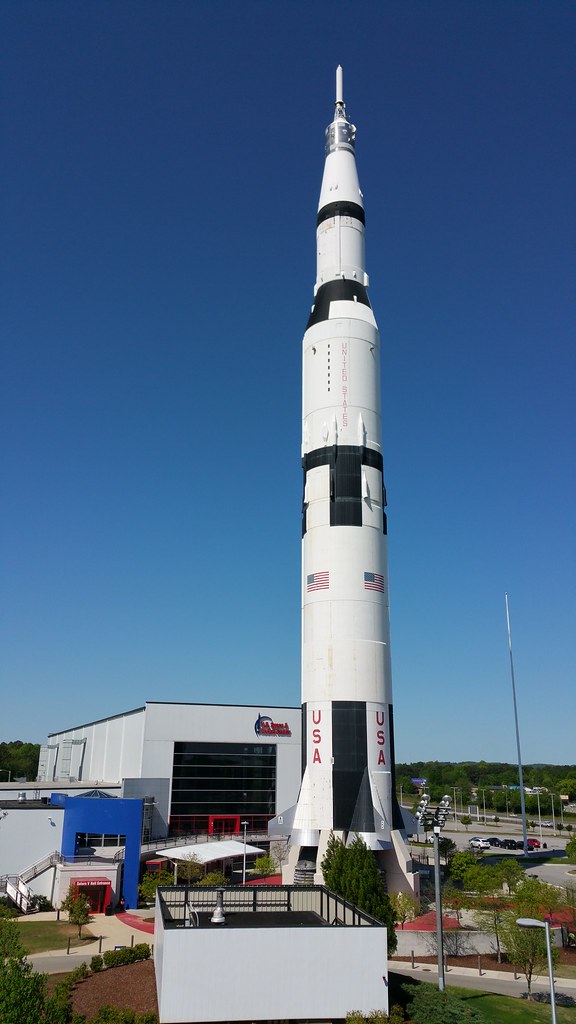
8. **The Mighty Saturn V: The Colossus for Lunar Conquest**
As the ambition of reaching the Moon soared, so too did the demand for unprecedented power and engineering ingenuity. The visionary teams at NASA understood that existing rockets simply wouldn’t suffice for the monumental task of delivering astronauts beyond Earth’s gravitational embrace and propelling them toward the Moon. What was needed was a true colossus, a rocket of unparalleled scale and thrust, and thus, the legendary Saturn V was born – the definitive engineering marvel that unlocked the Moon.
This three-stage liquid-propellant super heavy-lift launch vehicle was not merely a rocket; it was a meticulously designed system, conceived from the ground up to overcome the immense challenges of translunar injection. Its sheer size was awe-inspiring, towering over the landscape, and demanding entirely new infrastructure for its assembly and launch. This included the gigantic Vehicle Assembly Building (VAB), completed in 1965, and the custom-built Launch Complex 39 at Kennedy Space Center. To transport this towering rocket, an immense crawler-transporter was constructed, designed to carry the moonbound giants along a specialized gravel path.
The Saturn V’s design incorporated more than just raw power; it was an intricate system that included two separate spacecraft—a command service module for orbital operations and a lunar lander for descent and ascent from the Moon’s surface. Each component represented a pinnacle of aerospace engineering, meticulously conceived to work in concert and accomplish the complex task of reaching the surface and returning safely. The challenges in developing such a massive, multi-stage, and supremely reliable launch system were astronomical, requiring breakthroughs in materials science, propulsion, and guidance technology that pushed boundaries.
The engineering brilliance behind the Saturn V was evident in every stage, from the powerful F-1 engines of its first stage – each generating immense thrust – to the intricate staging mechanisms and sophisticated guidance systems. The Saturn V embodied the pinnacle of rocket science of its era, a direct, triumphant response to President Kennedy’s challenge, and an undeniable symbol of American ingenuity. Its development laid the profound foundation for not just lunar exploration but for all future heavy-lift launch capabilities.
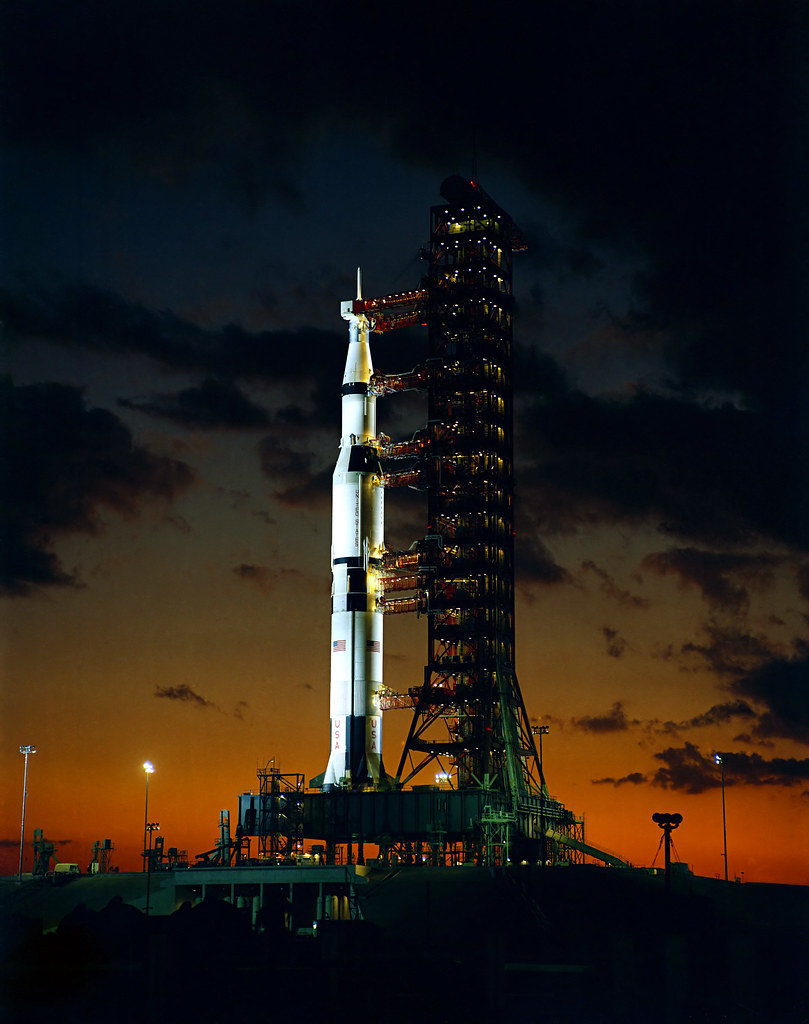
9. **Apollo 4: Proving the Saturn V’s Unrivaled Power**
Before humanity could step foot on the lunar surface, the magnificent Saturn V rocket needed to decisively prove its mettle. This critical validation came with the uncrewed Apollo 4 mission on November 9, 1967. This wasn’t just another test flight; it was the maiden voyage of the most powerful rocket ever built, a moment of immense anticipation that would determine the entire future trajectory of the Apollo program. The successful launch and mission profile of Apollo 4 unequivocally confirmed that NASA had engineered a vehicle capable of making the impossible possible.
The liftoff of Apollo 4 from Launch Complex 39A was a truly spectacular demonstration of raw power. Center Director Kurt Debus described its majestic ascent, noting the initial slow, deliberate rise that gave way to incredible acceleration, calling it “more impressive than anything I have ever seen.” This spectacle spoke volumes about the immense forces at play and the controlled release of unimaginable energy, showcasing the careful planning behind every launch.
This uncrewed test flight was meticulously designed to validate every critical system of the Saturn V, proving its ability to propel astronauts beyond Earth orbit and toward the Moon. During its flight, Apollo 4 performed crucial tests of all three stages, including the restart capability of the third stage engine and the re-entry performance of the Apollo command module. Every system, from the immense thrust chambers of the first stage’s five engines to the innovative flame deflectors and the tremendous flow of water (28,000 gallons per minute) needed to cool them during liftoff, was put to the ultimate test and performed flawlessly.
Apollo 4’s impeccable performance validated years of intensive engineering, design, and manufacturing. It instilled profound confidence in the entire program, confirming that the hardware was not only ready for human spaceflight but also robust enough for a lunar mission. This successful test flight served as a powerful declaration to the world that America was on course for the Moon, setting the stage for the crucial crewed missions that would soon follow in the relentless pursuit of the ultimate lunar goal.
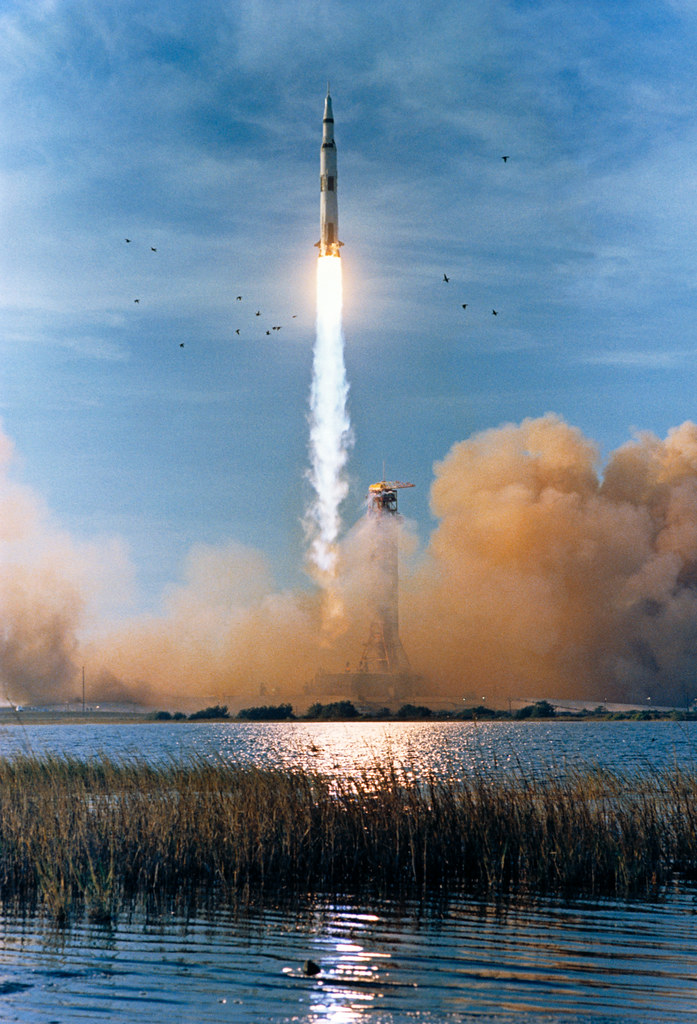
10. **Apollo 8: The Historic Journey to Lunar Orbit**
Just two months after the Apollo program’s first crewed Earth orbital mission, Apollo 8 took an even more audacious and monumental step. Launched on December 21, 1968, from Launch Pad 39A aboard a mighty Saturn V, this mission was a profound leap, marking the first time humans had ever left Earth’s gravitational influence to orbit another celestial body. The brave crew of Apollo 8—Frank Borman, Jim Lovell, and William Anders—didn’t just circle the Moon; they redefined humanity’s perspective of its place in the cosmos.
This historic lunar orbital mission was a profound technical, scientific, and psychological achievement. For the first time, humans saw the far side of the Moon with their own eyes, providing invaluable reconnaissance for future landing sites. More significantly, during their ten orbits, they captured the iconic “Earthrise” photograph. This breathtaking image, presented during a live Christmas Eve broadcast to a spellbound global audience, profoundly impacted how humanity viewed its home planet, igniting a new sense of global unity and environmental awareness that still resonates today.
The engineering and navigation required for Apollo 8 were unprecedented. Guiding a spacecraft across hundreds of thousands of miles, precisely entering lunar orbit, and then executing a flawless return trajectory demanded meticulous calculations, innovative guidance systems, and unflappable human expertise. The mission demonstrated that it was not only possible to reach the Moon but to successfully enter and exit lunar orbit and return safely to Earth. It proved the incredible reliability of the Saturn V and the Apollo spacecraft systems under the most demanding conditions imaginable.
Apollo 8 was a crucial dress rehearsal for the lunar landing, validating not only hardware performance but also vital operational procedures for navigation, communication, and life support systems at vast distances. It dispelled any lingering doubts about humanity’s capability to journey to another world, injecting an incredible surge of confidence and momentum into the final push towards the ultimate goal of landing on the Moon, just months away.
Read more about: Beyond the Lens: 12 Iconic Photographs That Shaped Our World, One Frame at a Time
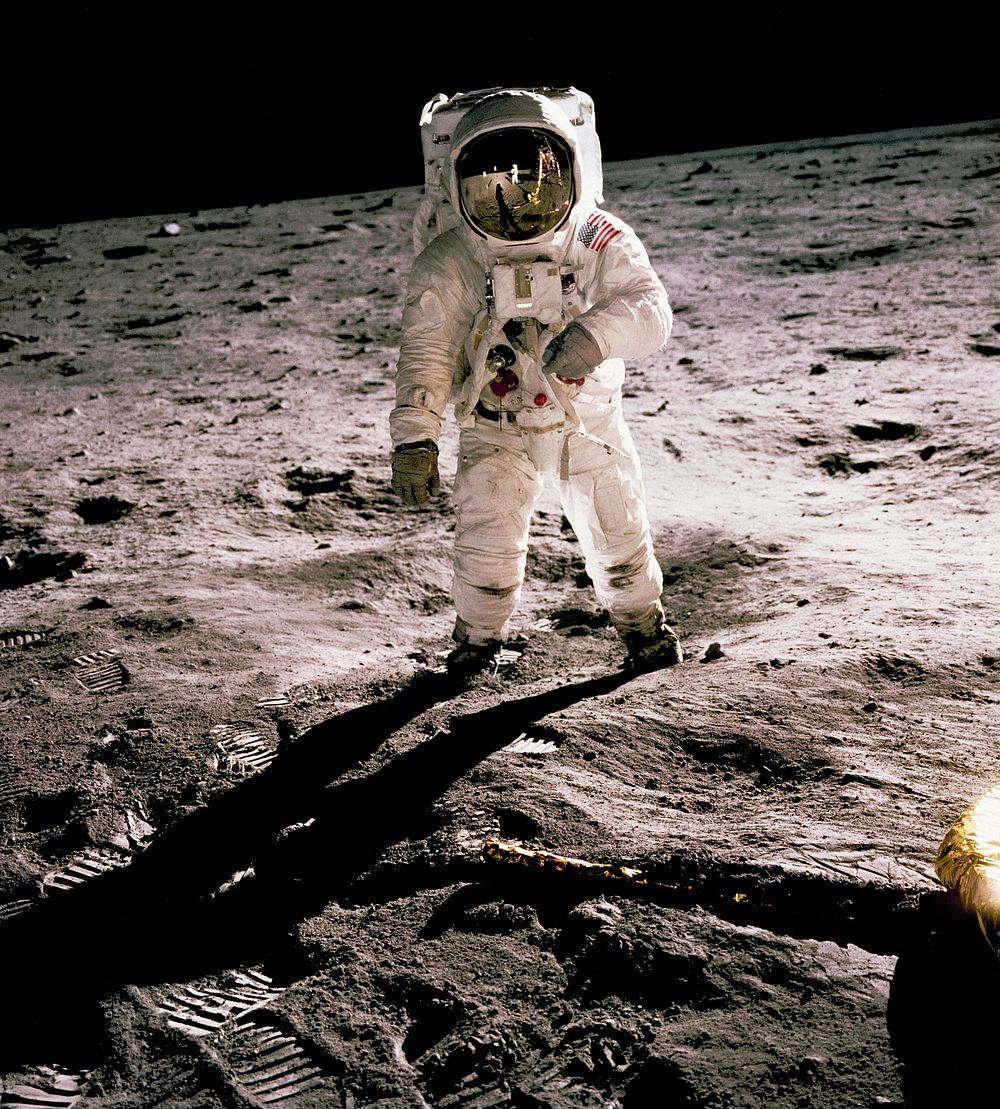
11. **Apollo 11: Humanity’s Ultimate “Giant Leap” onto the Moon**
The entire Space Race, the decades of intense competition, and the tireless work of thousands of brilliant minds, all culminated in one singular, breathtaking achievement: Apollo 11. On July 16, 1969, Commander Neil A. Armstrong, along with Michael Collins and Buzz Aldrin, embarked on an eight-day, 935,000-mile journey that would change humanity forever. Launching from Pad 39A, the mission was not just about reaching the Moon; it was about landing there and returning safely, a challenge no human had ever successfully faced before.
The meticulous preparations for Apollo 11 were a feat in themselves. The crew, along with the entire Kennedy launch team, prepared for a test like no humans had ever faced. From the Manned Spacecraft Operations Building, they made the eight-mile trip to Pad 39A, each step a testament to the culmination of years of effort and unwavering dedication. This wasn’t merely a spaceflight; it was the ultimate proving ground for human ingenuity and the pinnacle of collaborative engineering, designed to transform a seemingly impossible dream into a tangible reality for the entire world to witness.
On July 20, 1969, the world collectively held its breath as Neil Armstrong descended the ladder of the Lunar Module “Eagle” and uttered those immortal words: “That’s one small step for [a] man, one giant leap for mankind.” An estimated 530 million people watched the televised image, bearing witness to humanity’s first footfall on another celestial body. Buzz Aldrin soon joined him, exploring the stark lunar landscape while Michael Collins expertly orbited above in the Command Module “Columbia,” a critical solitary sentinel for their return. This was the ultimate realization of President Kennedy’s challenge.
The triumph of Apollo 11 was a monumental engineering ballet, flawlessly orchestrated by the Kennedy launch team and mission control. It showcased the peak of human ingenuity, combining the raw power of the Saturn V, the precision of the lunar lander’s descent and ascent engines, and the incredible courage, skill, and adaptability of the astronauts. This mission wasn’t just a national victory; it was a universal achievement, demonstrating what is possible when ambition, technology, and sheer human will converge. By the decade’s end, the Apollo Program had completed two successful moon landings, making Kennedy Space Center the launch capital of the world.

12. **The Human Computers: Unsung Geniuses Behind the Calculations**
While astronauts and rockets dominated headlines, an equally crucial component of Space Race triumphs lay with the brilliant minds who “calculated the impossible.” Behind every launch and maneuver were mathematicians and engineers working tirelessly. These human computers, unsung heroes, transformed abstract physics into tangible flight paths, launch windows, and emergency return trajectories, making ambitious space travel a practical reality.
In the United States, three extraordinary African American women at NASA were vital to program achievements, breaking barriers in science and civil rights. Katherine Johnson’s prodigious talents were indispensable, as she meticulously calculated launch windows and emergency return paths for Project Mercury and the Apollo Lunar Module, often verifying electronic computer outputs. Mary Jackson, a brilliant mathematician and aerospace engineer, became the first African American female engineer at NASA, contributing significantly to aerodynamic research. Dorothy Vaughan, a visionary leader, guided the West Area Computers unit, managing a team of mathematicians through complex problem-solving. Their intellectual contributions were foundational.
Across the ocean, in the Soviet Union, Yuri Kondratyuk stood out as another visionary mathematician and engineer whose foresight proved instrumental. His groundbreaking development of the Lunar Orbit Rendezvous (LOR) concept—a method where a smaller lander separates from an orbiter in lunar orbit, descends to the surface, and then later rejoins the orbiter for the return journey—would become a crucial element in landing astronauts on the Moon. This innovative concept drastically reduced the size and fuel requirements for lunar missions, a testament to the power of theoretical calculation.
These individuals exemplify the intellectual firepower that underpinned the entire Space Race. Their tireless work demonstrated that while hardware might lift us to the stars, it is the precise, painstaking work of human computation, foresight, and problem-solving that truly charts the course and ensures a safe return. They didn’t just solve equations; they opened pathways to the cosmos, proving that human intelligence, perseverance, and diverse minds are as vital to space exploration as any rocket engine, and inspiring future generations in STEM.
The 1960s were, without a doubt, a decade of unparalleled innovation and breathtaking ambition. From the shocking beeps of Sputnik to humanity’s first footsteps on the Moon, and the silent, supersonic flights of the Blackbird, this era forged a future that once existed only in the wildest dreams of scientists and engineers. The stories of these aeronautic feats—and the brilliant minds behind them—are not just historical footnotes; they are enduring testaments to the power of human ingenuity, perseverance, and the unyielding spirit of exploration. They remind us that when we dare to look up, to challenge the known, and to invest in the audacious dreams of engineering and science, there are truly no limits to what we can achieve. These triumphs continue to echo through time, inspiring us all to reach further, design smarter, and explore the next frontier with the same enthusiastic zeal that defined that incredible decade.




